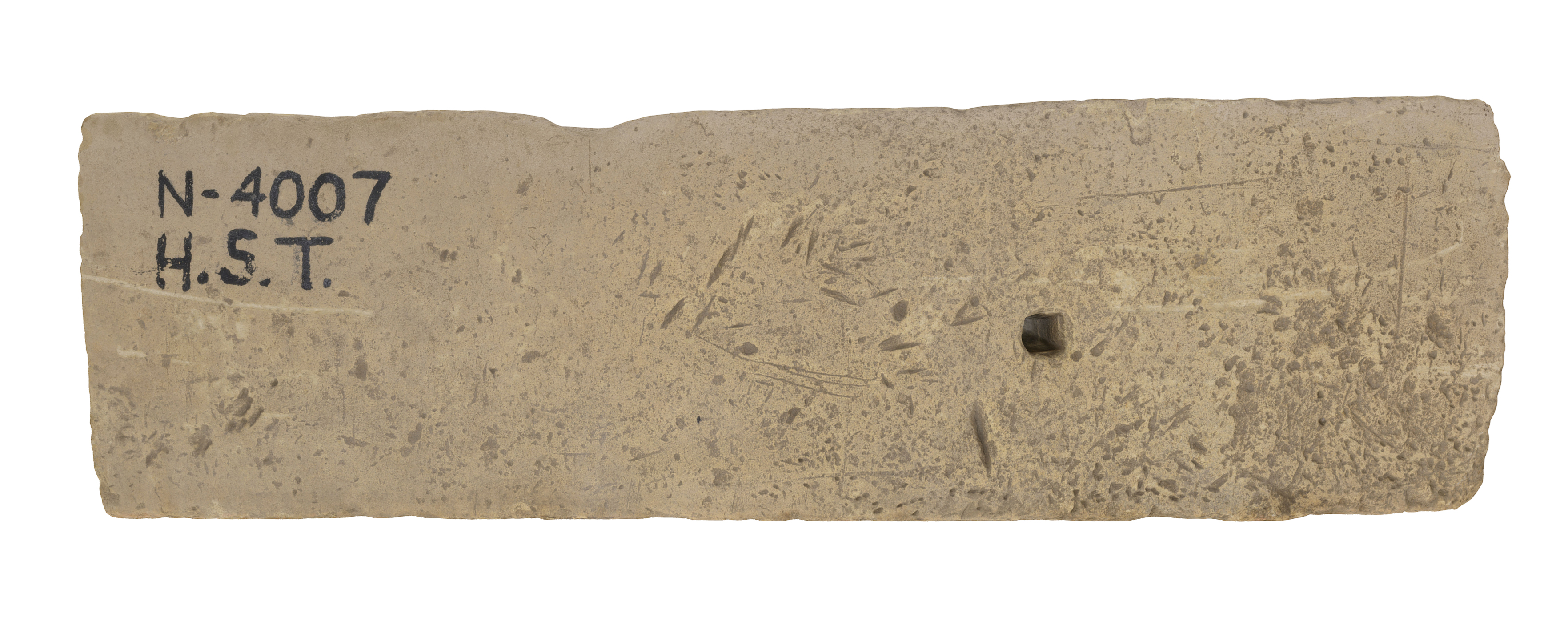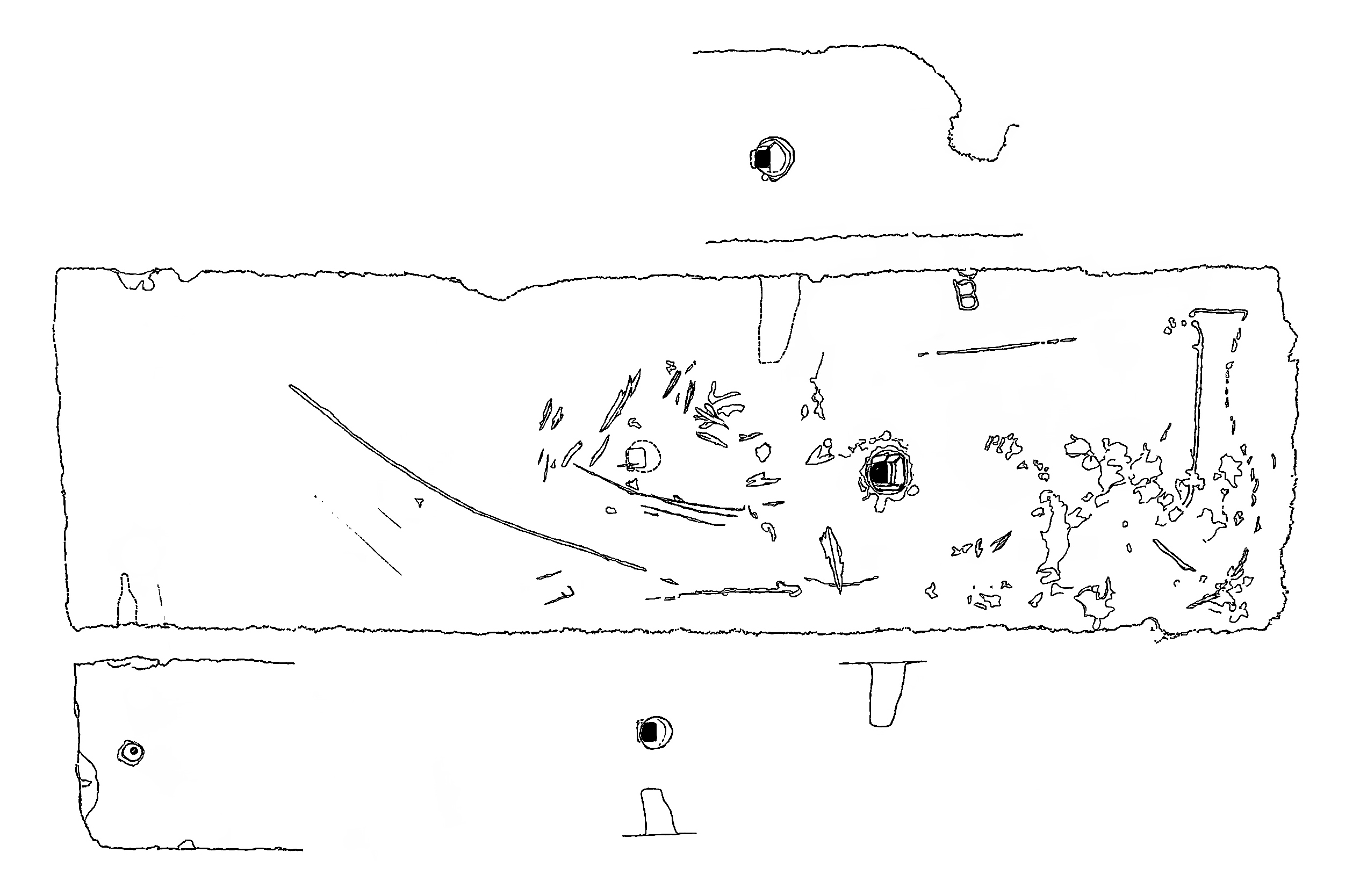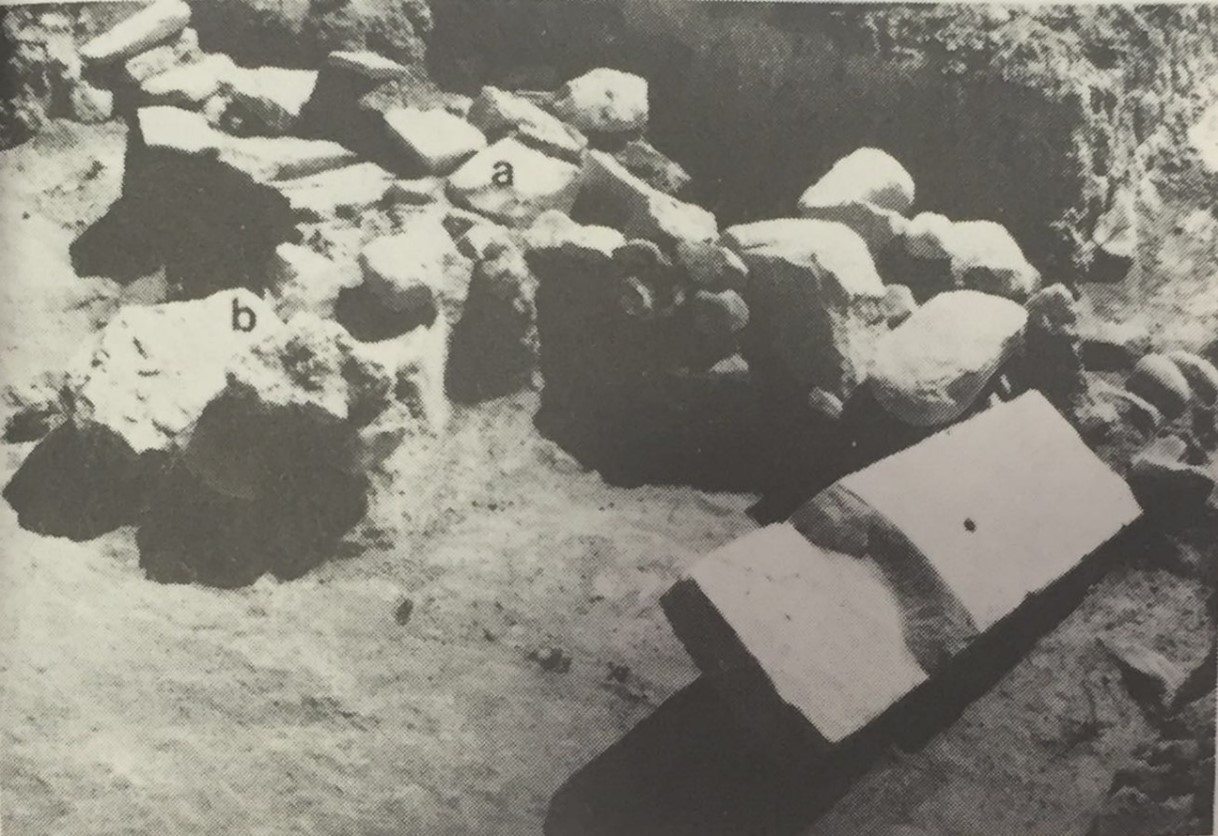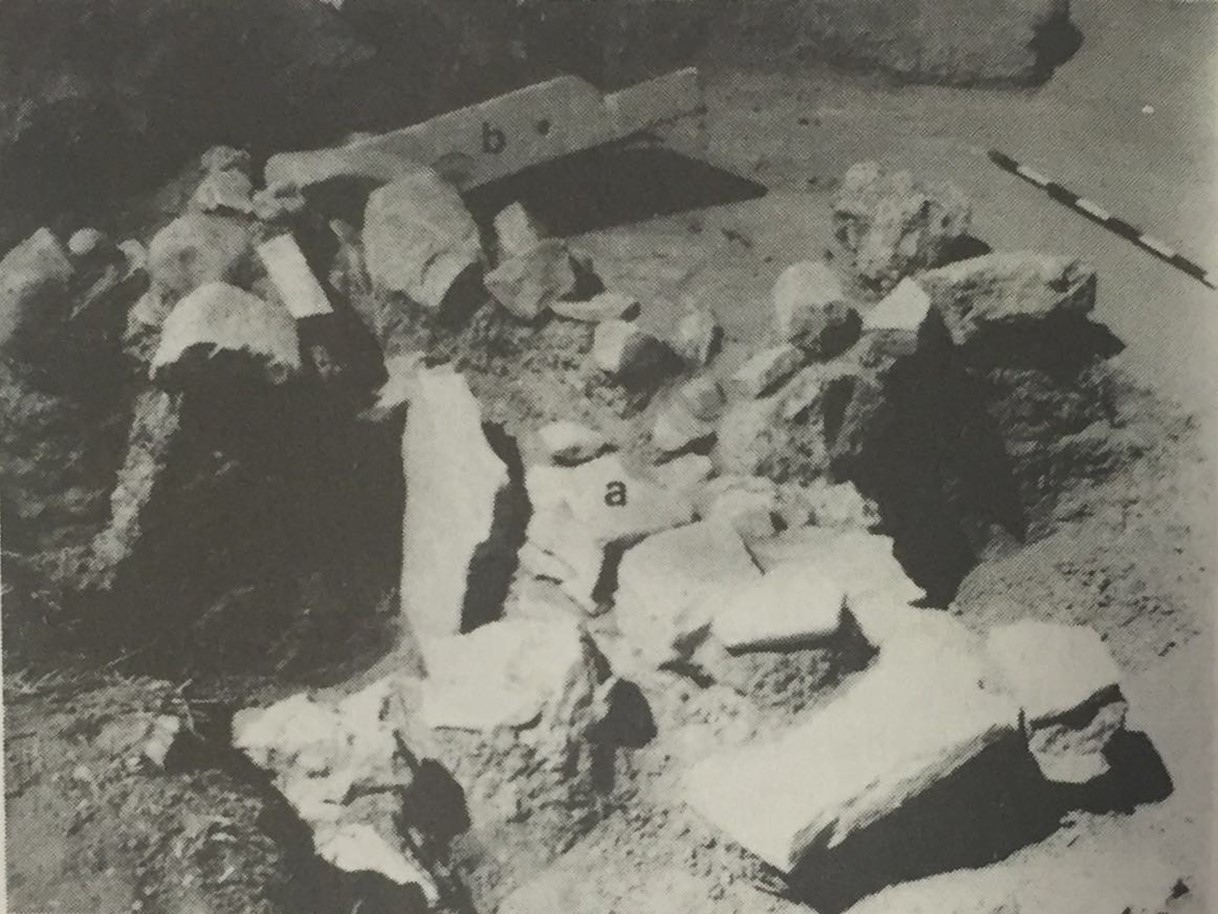Ship to the right with a vertical stempost, while the sternpost rises in a smooth curve. The stempost is the only part that was executed in some detail, with the inside edge of the post being vertical and straight, while the external edge is markedly hollow, flaring out at the top. A horizontal line to the right of amidships at a height slightly below that of the stempost is more difficult to determine. It possibly indicates the top of a screen or boom but there is no observable mast.
Syro-Canaanite ship graffito
C89
Late Cypriot IIIA1 (c. 1200)
Hala Sultan Tekke, Area 22, at the southern end of wall F 6066
L: 96 cm; W: 28 cm; thickness: 15 cm
Limestone ashlar block damaged at both ends, with one broad, long side intact. At the edge of one of the narrow long sides is a small semicircular depression surrounded by a worn area. Four cavities (possibly mortises) found irregularly placed, one on each side.
HST N 4007
Öbrink 1979: 16-17, 67, 73, figs. 69, 86b, 103, 104; Knapp 2019: 140-141, fig. 36; Wachsmann 1998: 49-50, fig. 3.14
Area 22 consists of densely built, small back-to-back houses which were located rather high up on the hillside, leading Öbrink to suggest that it corresponds to the outskirts of the town. The context comprises two houses with two rooms each, of which at least the western house (Rooms 8 and 9) enjoyed access to a court. Wall F 6066 bounds rooms 8 and 9 to the west. It is quite damaged, with its southern part destroyed, where blocks and stones are scattered around. Ashlar block N 4007 which bears the graffito is the southernmost of these blocks. It was found near the opening between rooms 2 and 8. Öbrink hypothesizes that it is likely a door-post, with the cavities being the pivot holes for the door. It is also possible that it functioned as a door-post in an earlier building, and was later reused as building material. It was found lying on its broad undamaged side on which the graffito is engraved. There are a number of stone anchors and ashlar blocks which have been found in area 22, some of which were clearly reused. It is quite possible then that block N 4007 was thus found in its secondary use, which makes its context a lot less instructive. It is notable that area 22 has provided a large number of fragments from Canaanite jars. C 89 is the only graffito not to be specifically associated with a high-status building. The careful working of the block itself however, as well as the presence of the stone anchors and other ashlar blocks within the same dwellings area, are a good indication that it probably originally came from a similar context.
While this particular form of stempost is most pronounced in this graffito, Wachsmann notes that the shape is identical to the Syro-Canaanite ships from the tombs of Kenamun, Nebamun, as well as the mnš-ship determinative from Ramses II monuments. This particular stempost is not only consistently assigned to Egyptian representations of Syro-Canaanite ships of the LBA period, but is also observable in Neo-Assyrian depictions of Phoenician ships of the EIA. Wachsmann concludes that the graffito should thus be identified as a ship of the Syro-Canaanite tradition. Another possible Cypriot parallel comes in the form of a boat model of uncertain LBA date from Enkomi.
References to this graffito in the previous scholarly literature have all relied on the drawing provided by Öbrink, since the only photographs of the ashlar were ones showing it in situ during excavation, with the face of the stone bearing the graffito lying face down. The photo taken by the author in 2024 raises questions regarding the identification of the markings as an intentional graffito, with a long line identified as a curving keel being absent upon close observation of the stone. The outer edge of the post likewise is not comprised of a continuous line. The ashlar also shows clear signs of post excavation damage, and was found lying face down on the floor of a storage room.
Knapp, A. B. 2018. Seafaring and Seafarers in the Bronze Age Eastern Mediterranean. Leiden: Sidestone Press.
Öbrink, U. 1979. Hala Sultan Tekke 5. Excavations in Area 22, 1971‐1973 and 1975‐1978. Göteborg: P. Åströms Förlag.
Wachsmann, S. 1998. Seagoing Ships & Seamanship in the Bronze Age Levant. College Station, TX: Texas A&M University Press.







